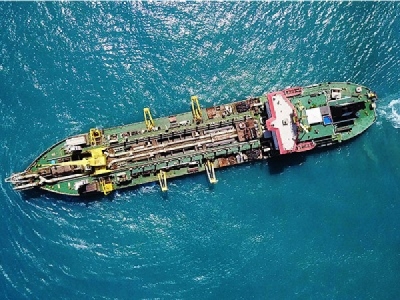
Posted on May 24, 2018
An EU-funded project has developed simulation software in a bid to save money and reduce the impact dredging has on the built environment. Being able to simulate water and soil interactions is a game changer for Europe’s EUR 7 billion industry which provides jobs for a quarter of a million people.
Simulating the interaction of fluids and solids is a complex and challenging task since fluids are dynamic and can make unpredictable shapes. Without the aid of software to help understand how wind, waves, water and soil interact, the dredging industry has to rely on costly large-scale experiments.
To address this challenge, the EU-funded MPM-DREDGE project built upon previous research to further develop the so-called material point method (MPM). First conceived in the 1960s, MPM is a mathematical tool that is used to simulate large material deformations and impacts between solids and fluids.
From animation to explosions, MPM is used across industries. However, MPM applications were not readily available for the dredging industry due to the ever-changing natural environment and unique, site-specific conditions.
“Before developing the software, we had to carry out testing and trail construction to understand how soils would behave when placed in the water,” says MPM-DREDGE project coordinator Alexander Rohe, a researcher at Deltares, an institute in the Netherlands. “We’ve achieved significant enhancements to the MPM when modelling the interaction of soil and fluids.”
Ground-breaking research
Providing a software tool for the dredging industry will enable European companies to carry out construction more cost effectively while reducing environmental damage.
The UK’s University of Cambridge and Deltares were independently researching such applications and decided to collaborate.
“We recognised the potential within the dredging industry and an understanding that more work would have to be done,” says Rohe. “We needed to develop the computer code, and carry out testing and real-world validation. This required industry and academia to come together.”
Then, with the support of the four largest EU dredging companies, the project selected three dredging applications to be modelled using the software:
•The dropping of geo-containers – large permeable containers filled with water-saturated sand and soil – used to restrict water flow and build dams or breakwaters;
•Reducing the risks of liquefaction, an underwater mudslide that can move tonnes of sea-floor material, potentially destroying underwater infrastructure and triggering tsunamis;
•Modelling the process of erosion around underwater structures such as dams, dykes and offshore foundations.
Now completed, the project has developed computer code that uses MPM to successfully model soil-fluid interactions.
“We can model large deformation problems for soil-fluid interactions, such as dropping geo-containers on to the sea floor or river bed,” says Rohe, adding that, previously, it was difficult to understand how erosion would shape the seabed around, say, offshore wind turbines.
Industry interest
The software has met with a warm reception in the dredging world.
“Overall, industry participation and interest have been encouraging,” says Rohe. “The software is available on request but we are planning to offer a fully open source version within three years.”
The MPM-DREDGE results have been integrated into the Anura3D community, which brings together EU and US universities and EU research centres. The community also provides knowledge and training for academic and industry users of the software tool.
New research projects that build upon the MPM-DREDGE results are under way in a further bid to maintain the competitiveness of the EU dredging industry.
MPM-DREDGE received funding through the EU’s Marie Sk?odowska-Curie actions programme.
Source: Europa





